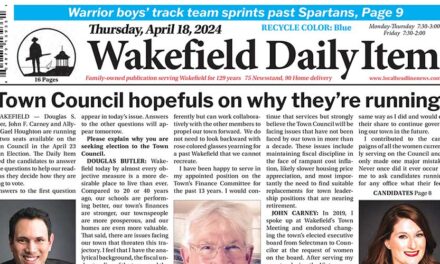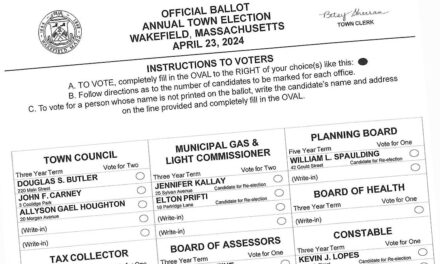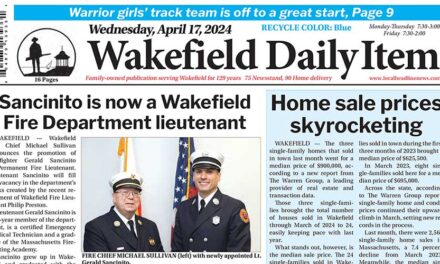By GAIL LOWE
WAKEFIELD — Heroin and opioid-related deaths have surged across Massachusetts in recent weeks. So far this month, there have been 58 suspicious deaths statewide, according to State Police.
But in Wakefield the trend has slowed since last spring, said Wakefield’s Police Chief Rick Smith.
“There have not been as many fatalities in our community as there were last spring,” he commented. “It has slowed a bit.”
In March, Governor Deval Patrick declared a public health emergency to combat the growing abuse of opiates, directing first responders across the state to carry Narcan, a drug that can counteract the effects of opiate overdoses and pledging $20 million to increase treatment and recovery services.
Even with so much public attention on the issue, local law enforcement and drug abuse counselors said they have been caught off guard by the activity in recent weeks. State Police said some 43 cities and towns across the state had suspected overdoses. Boston, Worcester and Springfield were not included in the State Police figures.
Smith said there are still a lot of medical aid calls concerning drug abuse, despite the drop in drug-related deaths and that EMTs who work for Action Ambulance have been very helpful with administering Narcan in these cases.
About the statewide surge, he said “there is no rhyme or reason.”
“It just happens to certain areas at certain times and much of this has to do with the quality and distribution on the street,” he said. When I say that, I mean there could be a dealer who has used the additive Fentanyl, which is a powerful narcotic that gives heroin an even greater boost. Mix Fentanyl into heroin and you’ll have a flurry of overdoses.”
Chief Smith said that heroin continues to be an inexpensive drug and addiction often follows on the heels of opioid use.
He explained: “Someone might have a shoulder injury and a physician prescribes Oxycontin or other narcotic to manage pain. The person becomes addicted but at some point they are unable to get their pills, either due to expense or because the physician will not continue to prescribe the narcotic. Since the addiction has taken hold, the only drug left to them is heroin and at between $5 and $8 a bag, heroin is an inexpensive alternative.”
Heroin, said Smith, gets into the bloodstream quickly when injected and this gives the user an immediate rush.
“Sadly, in today’s world, people who use heroin are your neighbors, your sons and daughters, your co-workers and even your parents,” said the town’s Police Chief. “Race, gender, socio-economic background — none of these factor in when it comes to profiling heroin users. Use of the drug crosses all familiar and socio-economic lines.
Spotting heroin use is not always easy but there are telltale signs. Look for someone who is physically lethargic, has pinpoint pupils, someone who is not paying attention, someone who has become sloppy or who is nodding off.
“These are the signs to look for,” said Smith. “Watch for a change in behavior in a loved one. Disappearing jewelry in a home could be a tip-off. When people begin to notice that, it means heroin use could be in your own house. It can happen in anyone’s home. That’s the heartbreak of it.”
Smith said that in spite of heroin addiction, many people manage to carry on with their daily lives until they are given a bad batch.
“We are continuing to work diligently to try to stem the flow of drugs in our community,” said Smith. “We’re working with agencies in all areas and sharing intelligence all the time. We’re also trying to find drug dealers on the street and prosecute them. We’re in the field all the time.
“We have to run the flag up the pole — that this could be in your own family. It’s a strong message, but one that’s legitimate.”
A spokesman from the Emergency Room at Melrose-Wakefield Hospital was not available to offer a comment on this story.




